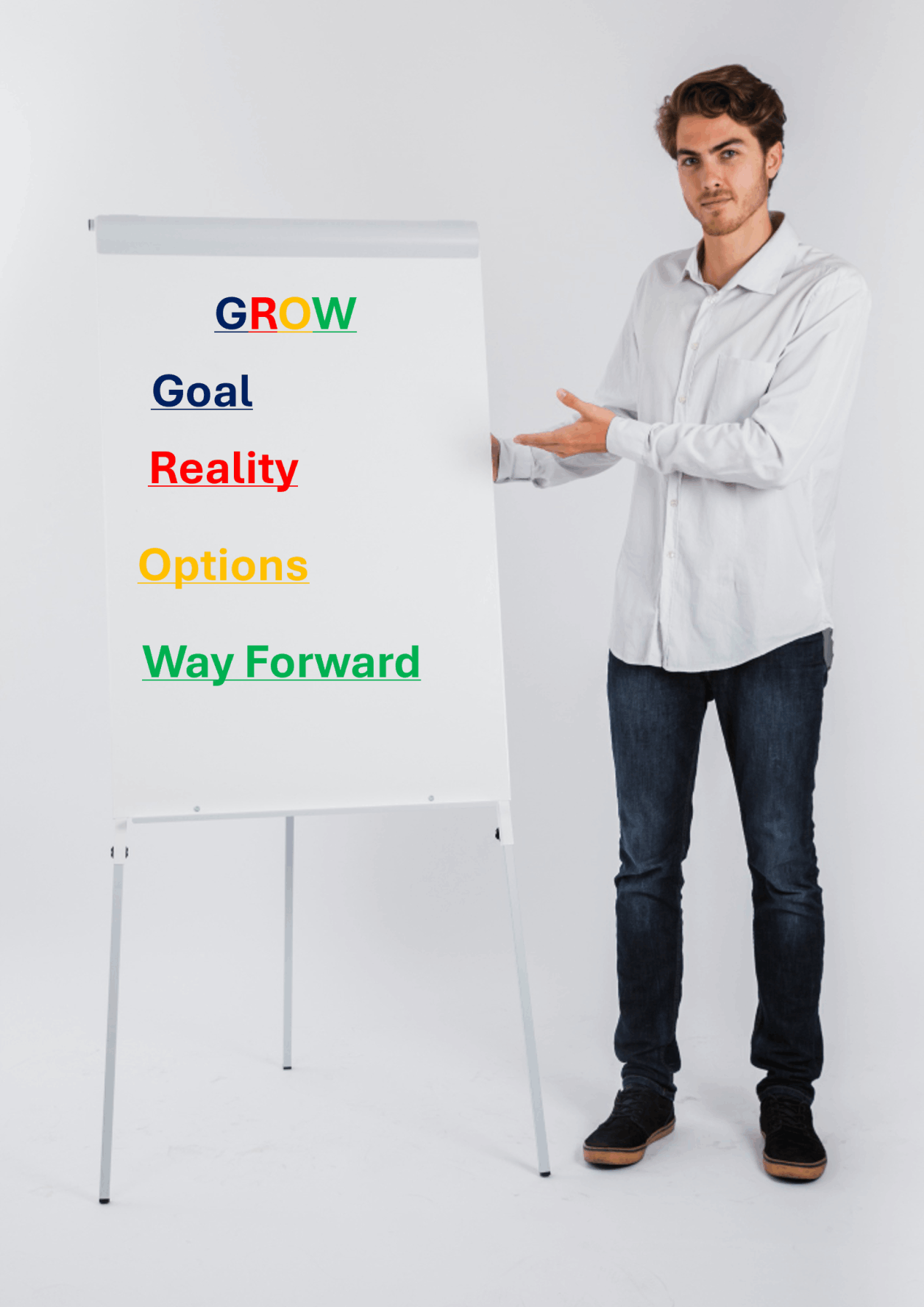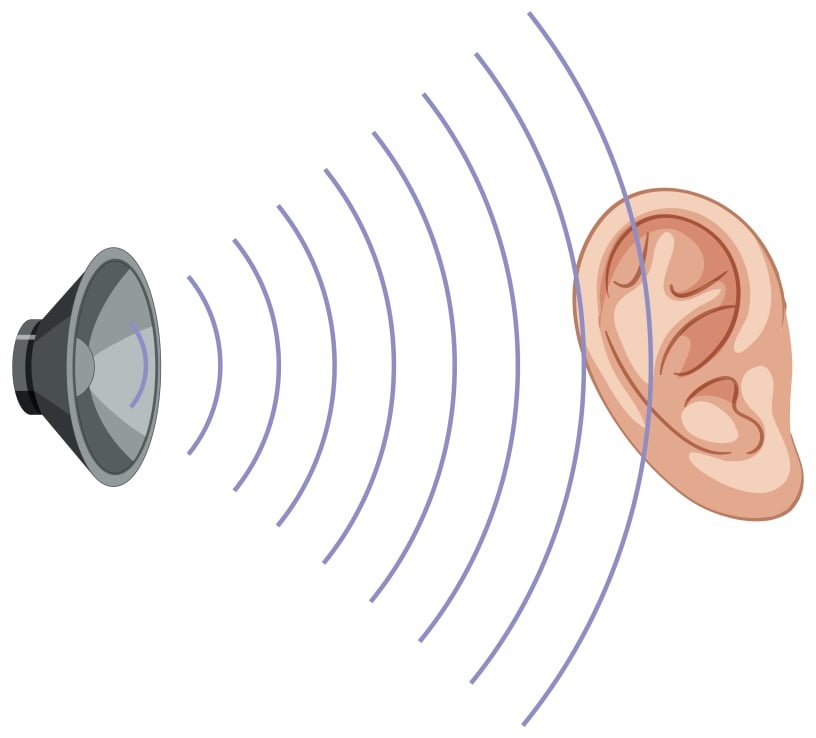Client Centered Learning



Without a doubt, I believe pupils need a bit of both!
They both have a place in the training learner drivers.
There will be times when client centered learning is vital, but in as much a way that teaching your learners will require as much attention.
It has been proven that "Coaching" learners tends to work better.
The reasoning behind this is that it engages them far more with the learning process and makes them think.
It is extremely easy to sit there blasting out instructions to a pupil about what they should do, what they did wrong, how they can do things differently or how you think they should do it differently. But by coaching instead of teaching, you will find that your pupils will learn quicker, enable you to understand their understanding, and also get to realise they know more than you think they know.
By engaging your pupil's in the learning process and using effective questions, you will find that nine times out of ten your pupil will be able to work out the answer to something that might not have been going so well and how they could change just one thing to make that process simpler.
This is not to say you should not fill in the gaps within their knowledge, but by allowing them time to reflect on what worked and what didn't and how they could do things differently to make things work, this not only allows you to take a step back a little, but also allows them to build on whatever current knowledge they have and let you know what they understand and what they don't.
Consider this!
You take on a new pupil and on day one they enter your car and you sit there and then say "get on with it then"!
What is your pupil going to do?
They are going to look at you and think "you're the instructor you tell me!"
But that doesn't mean Client Centered Learning can't start from day one by asking your pupil what they know about a car.
They may know absolutely nothing, but they may surprise you and be able to fill you in on virtually everything there is to know about the car.
If we just assume they know nothing, and bore them to tears taking about what pedal does what, how to set themselves up in the seat, setting up the mirrors etc, they will get bored stiff and feel that they have not achieved much by the end of that lesson.
It may be that they have driven a car before but didn't want to mention it, especially if they have just turned 17 and they possibly shouldn't have had any opportunity to drive a car legally.
That's not to say they haven't had an under 17's experience somewhere, or live on private land that has the facility to drive a vehicle on it.
So NEVER assume you know all the answers.
Find out what your learner knows first.
Fill in the gaps of any missing knowledge, or correct misinformation or understandings.
Once you set the margin from day one, your pupil will understand how future lessons will progress and that you are not going to treat them with contempt that they know nothing.
Set up a learning environment that puts you both on the same level.
Having an "I know everything and you know nothing" attitude will not go down well with many pupils.
They understand you have experience and knowledge, but that does not need to be rammed down their throats.
Express to them that you want to be able to utilise your lessons with them to give them as much skill as they can possibly gain in your time together.
Express that no question is a stupid question, and that the more they ask the easier it is for you to understand their knowledge and that it will help you to assist them. Reassure them that it's ok to make mistakes and that is why you are there to keep them safe and to build their skills so that those mistake become less and less.
Build a rapport with them so they feel they can ask and answer questions without feeling judged.
On the other hand you may find you have a pupil that needs information on everything, especially to start with.
Hopefully, as your lessons with these pupils progress you will be able to turn that teaching style into a coaching style client centered learning mode.
Their knowledge will grow and you will find that you will be able to ask them questions that you will get answers to. This will allow you to know that they have a good understanding of that particular subject.
The more they know, and you know they know it, the better prepared they will be for a future of driving.
One of the biggest areas where driving instructor fall down, is that they never give their learners enough time to come up with finding an answer for themselves. They jump in way too early without possibly rewording the questions to the pupil to change their thought process.
Sometimes the way a question is asked can confuse they learner and they are not sure of what it is your are asking. By rewording the question it may make them think of the answer you are looking for.
By not rewording and just jumping in with the answer, you have taken away the pupils chance to work out the answer for themselves.
Give them time! reword questions to them, and then if they still cannot find an answer then help them, but possibly in a way that makes them think again about what it is you have been asking but to give them a chance to think of other information that may be important.
Coaching is a skill that engages your pupil to work things out for themselves, and build on what knowledge they current have to improve on that particular subject.

Humans are great at dealing with one thing at a time,
try and get them multi-tasking, especially when driving a car can be really difficult.
Look at this scenario.
You have a pupil who is progressing reasonably well.
They are capable of carrying out the following: -
Cockpit drill
Moving off and stopping
POM routine
Turning left and right with a reasonably good road position.
You want to progress their learning and give them something different to do,
you suggest that they progress on to dealing with meeting situations.
You know a good location, and your pupil is capable of driving to that location.
You discuss roles and responsibilities and off your go.
You get to the training location, have a quick chat about what is required when dealing with meeting situations, your pupil appears to understand so you ask them to drive on.
On your first loop around the training area, a lot of issues raise their head.
Your pupil's road position was too close to all the parked cars when overtaking and kept pulling back in when not necessary.
Your pupil's speed was way too fast for the circumstances.
Your pupil could not judge approach speeds of other vehicles.
Your pupil didn't know when to stop for oncoming vehicles and on one occasion needed you to bring the car to a stop.
Your pupil was stopping way too close to parked vehicles causing an issue with moving off.
Mirror use was non existent.
WHAT DO YOU DO?
You cannot possibly fix all of this in one hit!
What is most important from a safety point of view?
Where do you begin, to rectify all these problems?
Well first and foremost, the lesson will need to be adapted.
You could possibly have one more lap to see if anything improves, but realistically ,there are just too many things going wrong here, that to continue just keep plodding on with lap after lap after lap and doing nothing about individual errors, learning will not take place, your pupil will probably become disconnected from the lesson, and it's highly likely they will become frustrated and demoralised.
You've not discussed any of it with your pupil, and if you continue doing loop after loop, hoping they will just get better at it,
are you offering value for money, and is true learning taking place?
You should be having a conversation with your pupil.
Get the first lap in and find out how they felt it went.
Firstly, have a conversation about why you needed to dual them (this is important as you possibly avoided a safety critical incident happening)
Once they understand fully, the implications of you needing to use the duals then find out,
What they thought went well and not so well?
Don't just ask one question, find out what was good about what went well and when you've delved deep enough into the good,
find out what they thought didn't go so well.
Ensure that you feedback to them, reinforcing what was good.
This sets a benchmark for your pupil to know what they are doing is correct.
They then start to build up mental pictures of the good, the bad, and the ugly.
When it comes to the not so good, or even bad.
You and your pupil need to know why it was bad.
What was going on with your pupil at the time for it to be bad.
What were they thinking, feeling?
What is their understanding on the subject?
What could have been better, and what would need to change to make it better?
Looking at the list above of things that didn't go so well, what questions might you ask your pupil to delve into the pupil's understanding ?
Some of the questions you might ask, and some of the answers you might expect to get back.
The Position in the road issue. Some questions and possible answers.
Q. How do you feel your position in the road was as we were overtaking the parked cars?
A. Not too bad I think
Q. Ok. So how did you judge your position in the road?
A. Err, Well I was just looking in front of the car and thought I was far enough away from them.
Q. So how far do you think you need to be away from parked cars when you overtake them?
A. Well, far enough that I don't hit them.
Q. How did you feel your position in the road was when we were not overtaking parked cars?
A. Not too bad I think.
Q. OK, what happened when you needed to overtake the next batch of parked cars?
A. I found that quite awkward.
Q. Why?
A. Because I couldn't see any oncoming vehicles until I had moved out?
Q. So, how could you make your line of sight better?
A. I could move out a bit more, and a bit sooner?
Q. Are you allowed to cross the centre line?
A. I'm not sure.
Q. OK, so can you cross a centre line in the middle of the road that has a broken line?
A. I'm not sure.
With no use of mirrors they definitely wouldn't have had a chance to carry out a quick scan to see how close they were, and they probably haven't had enough experience to gauge their position in the road and the size of the car. Their knowledge is lacking on what they can and cannot do with centre lines, is this another reason why they were too close to the parked cars, because they were unsure if they could cross the white line?
A pupil may not have started their theory practice, or may have but and actually passed it, but did they truly learn everything?
We should never assume what a pupil knows. Just by asking a few questions, we can eventually get to the bottom of an issue.
Don't ask the questions and you will not know what your pupil does or does not know.
The Speed issue. Some questions and possible answers.
Q. Based on the surroundings of those roads, how do you feel the speed of the car was?
A. Hmm, a bit fast?
Q. What are the potential implications of going too fast on roads like this?
A. I might need to stop harshly.
Q. Anything else?
A. There could be cars pulling out of junctions or coming out of driveways.
Q. What else?
A. Pedestrians crossing the road in between parked cars.
Q. Is that all?
A. People getting out of parked cars.
Q. So if someone were to open a car door as you passed it, how far away might you need to be so you don't hit it?
A. Err, the width of their door?
Q. What did you have to do when you had the first oncoming car coming at us?
A. Brake sharply.
Q. And when you did stop sharply, where was your position behind the parked car?
A. I was really close to it.
Q. So what could you have done differently if you were in the same situation?
A. I should have slowed down sooner, or stopped.
How were they feeling? Some questions and possible answers.
Q. How were you feeling as you were driving that little loop?
A. It was a bit messy.
Q. Ok talk to me about messy?
A. Well, it was a bit fast which scared me a bit, especially when those cars where oncoming.
Q. Ok, that's good that you recognise that. So, what scared you with them?
A. Well I didn't know if I could fit through the gap.
Q. So, what might have been the best course of action there?
A. Maybe I should have stopped.
Q. Yeah! Exactly that, remember, you can't hit anything if you're not moving. So looking at our next loop, what might you do differently?
A. Well, stop i suppose.
Q. Great, that sound like a good plan of action. Going back to the speed and you saying it was a bit fast, how fast do you think you should have been travelling?
A. Well, not as fast as I was.
Q. And how might that benefit you next time round?
A. I'll have more control?
Q. Yes, and what else does going slower allow us to do?
A. It give me more time to deal with everything.
Q. Brilliant! It's good that you understand this. What other issues came up from driving too fast around that loop?
A. Well, You had to dual me.
Q. Anything else?
A. Yeah, I didn't have time to assess the speed of the oncoming cars, and I know I missed all my mirror checks.
Q. What dangers are there in missing mirrors?
A. I wouldn't know if anyone was overtaking me.
Q. And what could happen if you didn't know?
A. I might move into the path of someone trying to overtake me.
Q. Yes exactly!
So, everything above is giving you an idea of how your questions can pull out your pupil's understanding of their knowledge, feelings, and a better understanding of their car control skills.
The questions may not need to be as in depth, or they may need to go further to get to the bottom of their pupils core skills.
Only you will be able to read and understand what it is they are saying to you.
Now your plan of action is to know where to go from here.
ONE STEP AT A TIME.
You can not possibly deal with all these issues at once, but what you can do, is set up the shared responsibilities for risk and take car of some of that risk,
so that your pupil can put their focus into dealing with each item that didn't go so well.
JUST ONE ISSUE!!!!! Don't try and fix them all at once.
Your pupil will solve one problem ten times quicker, than trying to resolve 2 or more issues in one hit.
As each issue gets resolved, you can introduce another one.
As a new one gets introduced, expect a bit of a slip on other skills, but given time, working with your pupil, and sharing the responsibility for risk, you will resolve all the issues and will be able to move on to the next goal.

Is an excellent tool to create a structured lesson for your pupils.
What questions could be asked to gain the pupil’s Goal?
What do you need to cover in this session for it to be a success?
What is your goal for this session?
What would make this time well spent for you?
What’s important to you at the moment?
What challenges are you facing at the moment?
What are you currently working toward?
What would you like to have achieved by the end of our session?
What would make this session really useful to you?
What do you want to work on?
What would you like to take away from this session?
If there are multiple goals that need to be addressed you could ask:-
I hear you want to work on _____and ______.
Which one do you want to work on in this session?
And if we have time for a second one?
Or
mentioned 3 goals, which one is the highest priority right now?
What questions could be asked to gain the pupil’s Reality?
How do you feel about your current abilities with this?
What are you doing that is working?
What is stopping you from moving towards your goal?
What would happen if you did nothing?
What is the predominant feeling when...?
Where are you now in relation to your goal?
How do you feel about yourself in this situation?
What do you like about this situation?
What have you learnt so far?
What have you been avoiding?
What is your intuition telling you?
What habits are getting in the way?
What are you telling yourself, that’s getting in the way?
How does it suit you to stay as you are?
What other considerations do you have that we haven’t looked at yet?
Who else does it affect?
How do you hold yourself back?
What are the internal / external obstacles?
What is the result of that?
Is this always a problem or are there situations in which it isn’t?
On a scale of 1 - 10 what is your level of confidence in your ability to...?
What impact is this having on you?
What could you do?
What else?
Is there anything else?
What else could you do?
What do you want to do?
What don’t you want to do?
What choices do you have?
What steps could you take?
Which option would be the best use of your time right now?
What are all the different ways you could approach this?
What are the advantages and disadvantages of each of these in turn?
What are other alternatives to consider?
What else is a possibility?
Which options would give you the best results?
Which ones excite you the most?
Which of these solutions appeals to you most, or feels best to you?
Which would give you the most satisfaction?
If someone else came to you with your goal, what options would you suggest they consider?
Imagine you’re fully confident in your abilities, what could you do?”
What is within your control?
If you did know the answer, what would it be?
What questions could be asked to gain the Pupil’s Way Forward?
Based on your pupil’s options: -
What else are you going to do?
And what actions do you WANT to take?
What actions NEED to be taken?
What resistance do you have, if any, to taking these steps?
What could stop you from taking these steps?
What support do you need?
What can you do to support yourself?
How will you know if this has been successful?
If you current scaled score is … where you would like it to be, and what will it take to achieve that?
How are you going to achieve this?
What needs to change for you to achieve this
What will it feel like once you have achieved this?
What would you like me to take care of?
How much support do you need from me?



On your first lesson with your pupil and in an attempt to start building a rapport with your pupil, you may ask them what their hobbies and interests are.
Based on their response and by your own intuition you may be able to gauge from this how they might learn best.
Adapting your teaching style to suit your pupils may take a little time but once you have found what works best for them you will tend to stick with it, but always be prepared to adapt that style if it is necessary.
If you find that the manner in which you are delivering the lesson is making no difference to the outcome of the task in hand, then the teaching style you are using is probably not working and will require you to try something different.
This may mean offering a demonstration, using visual aids, dry wipe board, a video, of whatever other tools you may have to hand to assist your pupil.
Client Centered is about getting your pupils thinking and finding answers rather than you supplying them.
Obviously, there are going to be times when the knowledge will just not be there, and this is where you can teach.
But as your lessons progress, the will be previous skills learnt that you can reflect on to implement into the new tasks.
By linking all the previously learnt skills into the new tasks you are allowing your pupils to cement the knowledge they already have, into new situations and experiences, and they will get to learn that most of it is very very similar, it's just the situations that change.
Client Centered learning will without a doubt create skills with your learner that will last them a lifetime of driving.
The way people learn and how they retain information will depend mainly on how they learn it.
As a guide:
When people watch presentations then will tend on average to remember 50% of what they hear immediately after that presentation, 25% the next day, and 10% a week later.
The way people learn and how they retain information will depend mainly on how they learn it.
As a guide:
When people watch presentations then will tend on average to remember 50% of what they hear immediately after that presentation, 25% the next day, and 10% a week later.
Demonstrations: People retain 30% of what they learn when they see a demonstration.
Audio-visual: People retain 20% of what they learn from audio-visual.
Reading: People retain 10% of what they learn from reading.
So you have to think about how we grow on that retention rate.
If someone retains 10% from reading a book, if they read that book again, potentially they will retain an additional 10%?
But do they actually retain an additional 10% or do they just cement the 10% they already knew from the 1st time they read the book?
Statistically the more they read the book, the more naturally they will retain additional information.
Think about your days as a trainee instructor.
I bet you went through the Highway Code Book or the Know Your Traffic Signs Book numerous times before all the information began to sink in and cement itself in your brain. But you'll know that you don't know it all from memory and there will without a doubt be times when you will need to refer back to these books to clarify what you know or what you think you know.
This will be no different for your pupils with every aspect of their learning to drive.
They will retain a certain amount of information from week to week but they will also forget some of it.
This is why repetition is so important.
But it's also important to get your pupils to answer your questions rather than you jumping in with an answer.
If they can give the answer, you'll know that the information has stuck in their memory banks.
If you are constantly giving the answers, how will you know your pupil has retained that information?
An easy analogy of how we retain information.
Just imagine filling a beaker with water.
On the first attempt at filling it you realise it has a hole in and the beaker only retains 10% of the water.
Just after filling it once, you are not going to try filling it again as you know it will still only retain 10% of the water the next time.
So before attempting to fill it, you block the area where the hole is, and if you couldn't fix the hole you'd ditch the beaker and find another one.
This is itself the easy way to think about your learner and their learning experiences.
You discuss a goal with them of what they want to achieve by the end of the lesson.
They have a go and maybe it works and maybe it doesn't.
But if it doesn't you'll need to work with them to find a solution.
Now, driving is probably a little harder to resolve than finding another beaker, but the core principle is going to be the same.
A discussion on what went wrong, what could be done to resolve the problem from happening again, making some changes and then having another go so see if what you changed works or doesn't is exactly how your pupil is going to learn how to adapt their driving style, their techniques, and to plan for future eventualities that may happen. They are learning a skill to be able to adapt their driving to suit certain situations and how to avoid certain situations from happening in the first place.
Lets just go back to the beaker!
So, your pupil has grabbed the beaker, filled it once and realised it will only hold 10% of the water in it.
You discuss with them what they can do to resolve the situation.
Example pupil 1. You are going to get those who will say, "throw it in the bin and get a new one"
Example pupil 2. You will get those that say "let's put some tape over the hole and try again"
Example pupil 3. You might get those who will say "I dunno"
Our roles as instructors are to use our skillsets to work with our pupils to get them to find an answer.
How might you respond to all 3 different pupils?
You might respond to pupil 1, having seen the hole in the beaker, that it is past a useable condition and it makes sense to discard it and get a new one.
You might respond to pupil 2. by saying that they can give it a go and see what happens.
You might respond to pupil 3. For them to explain what they don't know about "I dunno" or what maybe they do know about "I dunno"
it's surprising how asking someone what they don't know about I dunno will bring back more information from that pupil.
It could be so easy to just fill in the gaps and give them an answer, but give them time to think about what they don't know, and you'll be surprised with the outcome.
Going back to pupil 2, Their idea to patch up the hole and have another go is a perfect way to think about what we do as instructors. The pupil has a new goal to achieve and it doesn't always work first time. So we discuss it, find out what we could do to address the situation, and then have another go.
Pupil 2 by patching up the beaker realises that the beaker now holds more water, but still isn't sufficient enough to keep it full, but it has made progress in keeping more water in it.
They could either consider trying to patch it up even more and haver another go, or they could concede that they need a new beaker.
What they have realised more than anything else, is that something needed to change to gain a full result. In this case it was a new beaker was required.
In driving terms, it may mean that the method they are trying is getting better, and a few more attempts may be needed to perfect it, or it may mean that the method being used to try and achieve a good outcome needs to change as the one being used isn't working.
What part of the core three skills isn't working?
They may have two of the three skills but the third one is missing. What needs to happen to build that skill?
It may be that this is where we need to consider when we adapt a lesson to help the client fill their need to achieve their goal.
But by working with your pupil, you will find a satisfactory outcome in the end.
Engaging all the time with your pupil and getting them to understand what needs to change is all a part of delivering a Client Centered Lesson.
Some people use what is called the learning pyramid, and it looks like this.

You'll need to build a good rapport with your pupils, and with this rapport, should come trust.
If you pupils trust you they will be more engaged with you.
Trust comes in many forms.
Your time keeping (if you are always late, or not supplying the length of time for the lesson for what you are charging)
The condition of your car (constantly breaking down is not going to build trust)
Your knowledge (Do you know your stuff, or are you constantly having to look through books or get back to your pupil at a later date with an answer)
Are you actively listening to your pupil or do you talk over them?
Is it your way or no way. do you actively take on board your pupils perspective?
Are you non discriminatory?
One of the biggest trust builder questions to a lesson is to ask your pupils
HOW CAN I ASSIST YOU TODAY?
This will show your pupil that you are putting them at the forefront of their learning and that you are prepared to listen and build a lesson plan based around their needs.
Obviously, the building of trust with them will go straight out of the window if you then listen to them and then continue to do something totally different to their needs.
Now this is not to say that it would be safe to do what your pupil is asking, so it is therefore your responsibility to discuss and create questions that will allow your pupil to see the interim steps that may need to be taken before you could actually get the the goal they have initially tried to make.
Use bite sized chunks and work on them first, it's easier to do this than trying to consume the whole meal in one.